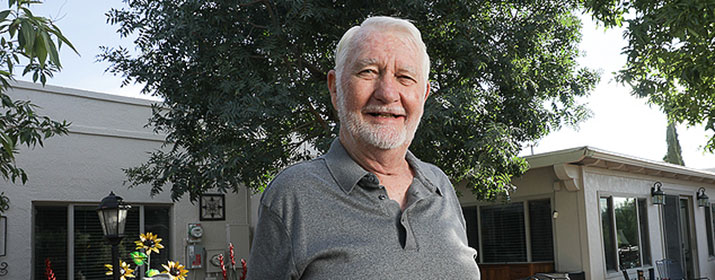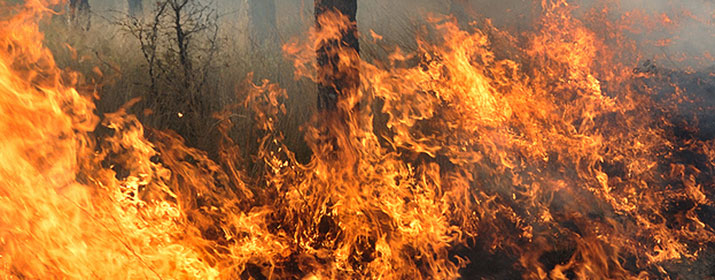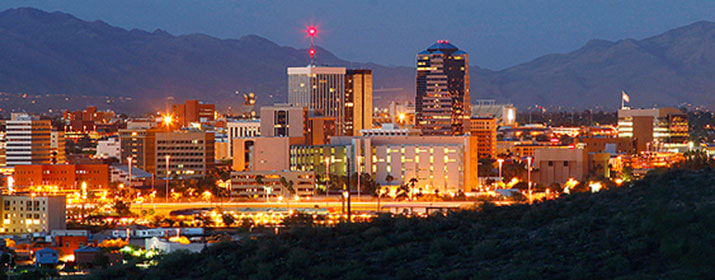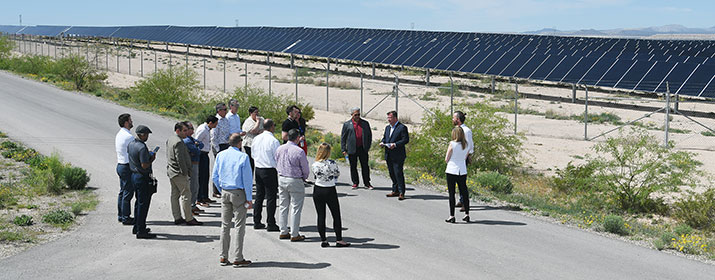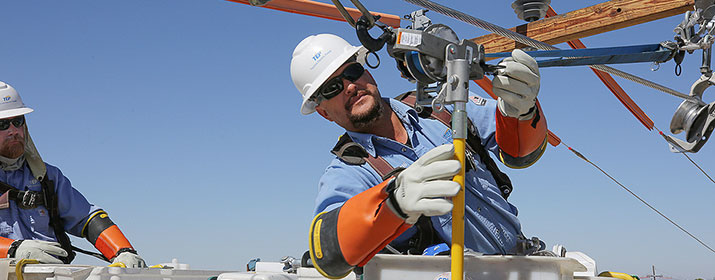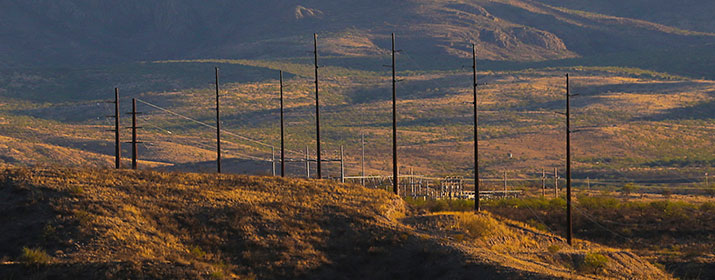
Year-round inspections, repairs and upgrades to our energy grid are among the wildfire mitigation measures we use to ensure safe, effective operations.
Safety is our highest priority and we have multiple measures in place to reduce the risk that wildfires might present to the public, while maintaining reliable service for our customers,” said Larry Robinson, Director of Engineering.
Some of the measures we use to guard the grid from wildfire risks include:
Inspection and vegetation management. Crews conduct yearly ground-based patrols of 138 kilovolt (kV) and 500kV systems, with aerial helicopter patrol inspections twice a year of 345kV lines. We also use drones and regular maintenance inspections to identify areas where vegetation might grow too close to power lines. Vegetation is cleared up to 300 feet away from our high voltage transmission lines.
Crews work throughout the year to trim trees and other vegetation that could create fire risks near lower-voltage distribution equipment. In 2024, we trimmed approximately 14,000 trees in our service area.
“Clearing vegetation away from our equipment helps reduce the chance that a wind-blown branch could contact power lines and start a fire,” Robinson said.
Fire-resistant transmission systems. We install transmission equipment on non-combustible steel poles and apply flame-retardant paint in high-risk areas. We’ve also improved the grounding and bonding procedures of power pole hardware to reduce ignition risks. Our System Control operators monitor transmission equipment around the clock to identify faults and de-energize equipment as needed to support wildfire mitigation and fire suppression efforts.
Emergency planning and situational awareness. TEP participates in wildfire training and preparation efforts with neighboring utilities, public agencies, tribal offices, private landowners and others before and during wildfire events. If wildfires approach our transmission systems, employees are assigned to coordinate with firefighting agencies and local officials at incident command sites. Employees monitor state and federal wildfire and emergency management websites to identify potential threats near TEP systems.
Despite our robust wildfire mitigation efforts, extreme summer heat and high winds can increase the risk that power lines might spark wildfires, particularly in remote, dry areas.
Beginning this summer, in dangerous weather conditions, we may need to proactively shut off power to a very limited number of customers in certain areas that are risk-prone for wildfire. These shut-offs would temporarily interrupt electric service until conditions improve. This measure, which TEP would only use as a last resort, is known as a public safety power shutoff (PSPS).
After a comprehensive analysis of weather, vegetation, wildfire history and fire spread modeling in regions we serve, we’ve determined that about 1,300 TEP customers could be subject to PSPS events. Our review included engagement with emergency response coordinators and first responders. The vast majority of our 450,000 customers will not experience a service interruption due to PSPS events during periods of extreme wildfire risk.
For more detailed information on such events, visit tep.com/wildfire-safety.

